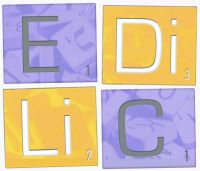Description
The Basque Government's Department of Education launched the PYCTO methodology in the 2021/2022 academic year to improve students' oral, reading, and writing skills in Basque, Spanish, and English. Originally developed in Barcelona in 2012 (Ballesteros, 2019), PYCTO has been shown to effectively enhance students' narrative and explanatory writing in Catalan and Spanish for third to sixth graders by using a multimodal (Jewitt, 2008) and multilingual approach to literacy. However, prior to this study, no research had explored its use in early primary education (ages 6-10) across three typologically distinct languages.
This longitudinal study examined PYCTO’s impact on reading comprehension, writing skills (see Orcasitas-Vicandi et al., 2024 for findings from the first year), language proficiency, language transfer, and teacher attitudes. For the purposes of this presentation, however, we will focus on the method's effectiveness in enhancing students' writing skills.
The study employed both holistic and analytic assessment measures (Rinnet & Kobayashik, 2016) to evaluate writing proficiency across the three curricular languages of the Basque Autonomous Community: Basque, Spanish, and English. The aim was to investigate the development of writing skills in children aged 6-10 over a three-year multilingual intervention using the PYCTO approach. A total of 3,309 compositions in Basque, Spanish, and English were analyzed using quantitative methods. A specific rubric was developed, drawing on previous studies by McKenna et al. (2021, 2022), to assess lexical richness (analytic measures) and overall writing competence (holistic measures) across four dimensions. The study employed a repeated-measures mixed ANOVA to assess the effects of time and methodology in the previous dimensions.
Results showed that participants fromthe multilingual intervention outperformed those in the control groups across all three years and in all three languages. These findings suggest that multilingual and multimodal approaches to literacy instruction offer greater benefits than methods that treat languages in isolation.
References
Ballesteros, R. (2019). Transforma la clase de Lengua en un Espacio de Creatividad. Cuadernos de Pedagogía 499: 208–217. http://hdl.handle.net/11162/191501
Jewitt, C. (2008). Multimodality and Literacy in School Classrooms. Review of Research in Education 32, 241–267. https://doi.org/10.3102/0091732X07310586
McKenna, M., Dedrick, R. F., & Goldstein, H. (2022). Development and Initial Validation of the Early Elementary Writing Rubric to Inform Instruction for Kindergarten and First-Grade Students. Assessment for Effective Intervention, 47(4), 220-233. https://doi.org/10.1177/15345084211065977
McKenna, M., H. Goldstein, X. Soto-Boykin, K. Cheng, G. A. Troia, and J. Ferron. 2021. Supplemental Intervention Improves Writing of First-Grade Students: Single Case Experimental Design Evaluation. The Journal of Educational Research 114(3): 278–293. https://doi.org/10.1080/00220671.2021.1923450
Orcasitas-Vicandi, M., Molás-Olalde, I., & Fernández-de-Gamboa-Vázquez, K. (2024). Learning how to write using all our languages: a multilingual approach to literacy in primary education. International Journal of Bilingual Education and Bilingualism, 27(10), 1342–1359. https://doi.org/10.1080/13670050.2024.2361741
Rinnert, C. eta Kobayashi, H. (2016). Multicompetence and multilingual writing. In R. M. Manchón & P. K. Matsuda (Eds.), Handbook of second and foreign language writing (365-385 orr.). Walter de Gruyter.
Content/contenu/Inhalt 2
Le département de l'éducation du gouvernement basque a lancé la méthodologie multimodale (Jewitt, 2008) et multilingue PYCTO au cours de l'année scolaire 2021/2022 afin d'améliorer les compétences orales, de lecture et d'écriture des élèves en basque, en espagnol et en anglais. Cependant, avant cette étude, aucune recherche n'avait exploré son utilisation dans l'enseignement primaire précoce (de 6 à 10 ans) dans trois langues typologiquement distinctes.
Cette étude longitudinale s'est concentrée sur un certain nombre de domaines, mais cette présentation se concentre sur l'efficacité. l'efficacité de la méthode pour améliorer les compétences en écriture des élèves. L'étude a utilisé des mesures d'évaluation holistiques et analytiques (Rinnet & Kobayashik, 2016) pour évaluer la maîtrise de l'écriture dans les trois langues enseignées dans le programme de la Communauté autonome basque. L'objectif était d'étudier le développement des compétences en écriture chez les enfants âgés de 6 à 10 ans au cours d'une intervention multilingue de trois ans utilisant l'approche PYCTO. Au total, 3,309 compositions en basque, en espagnol et en anglais ont été analysées à l'aide de méthodes quantitatives. Une grille d'évaluation spécifique a été élaborée, sur la base d'études antérieures de McKenna et al. (2021, 2022), afin d'évaluer la richesse lexicale (mesures analytiques) et la compétence globale en matière d'écriture (mesures holistiques) à travers quatre dimensions. L'étude a utilisé une ANOVA mixte à mesures répétées pour évaluer les effets du temps et de la méthodologie dans les dimensions précédentes.
Les résultats ont montré que les élèves ayant participé à l'intervention multilingue ont obtenu de meilleurs résultats que ceux des groupes de contrôle au cours des trois années et dans les trois langues. Ces résultats suggèrent que les approches multilingues et multimodales de l'enseignement de la lecture et de l'écriture offrent de plus grands avantages que les méthodes qui traitent les langues isolément.
| Title/ titre/Titel 2 | La promotion de l'écriture multilingue dans l'enseignement primaire : Tirer parti de toutes les langues scolaires grâce à la méthode PYCTO |
|---|

